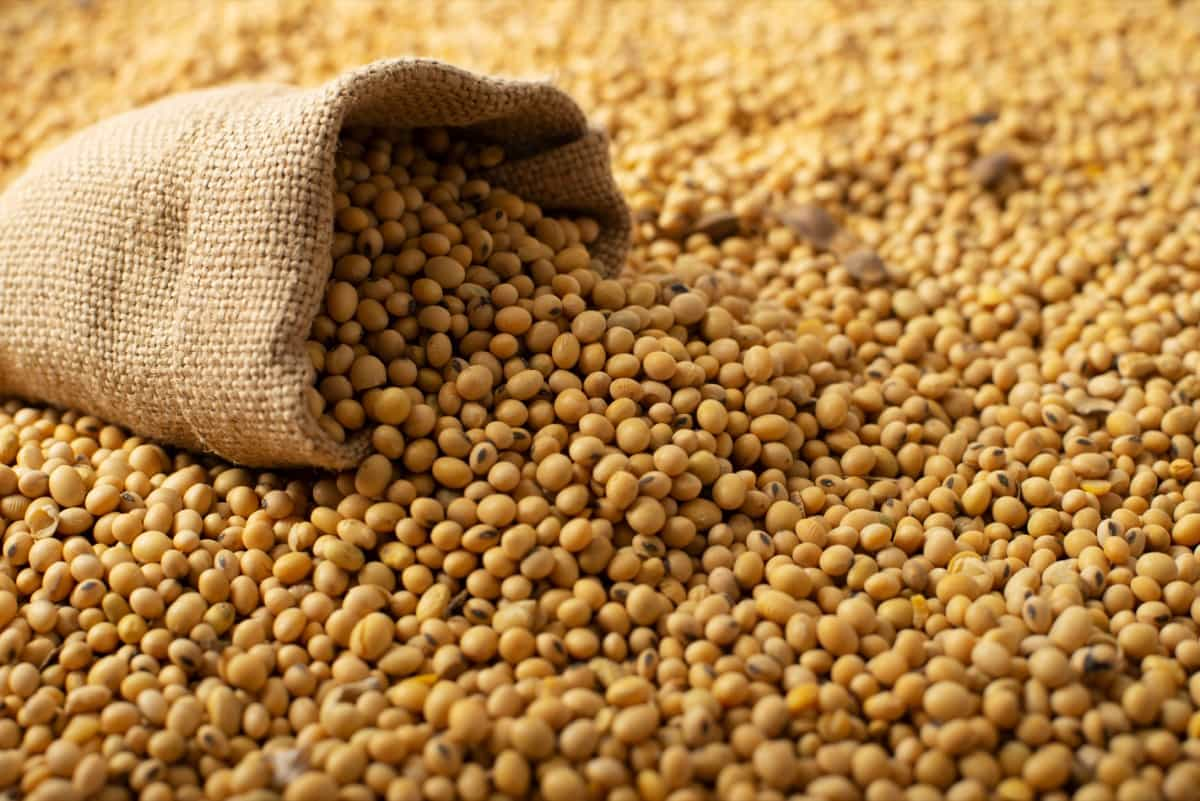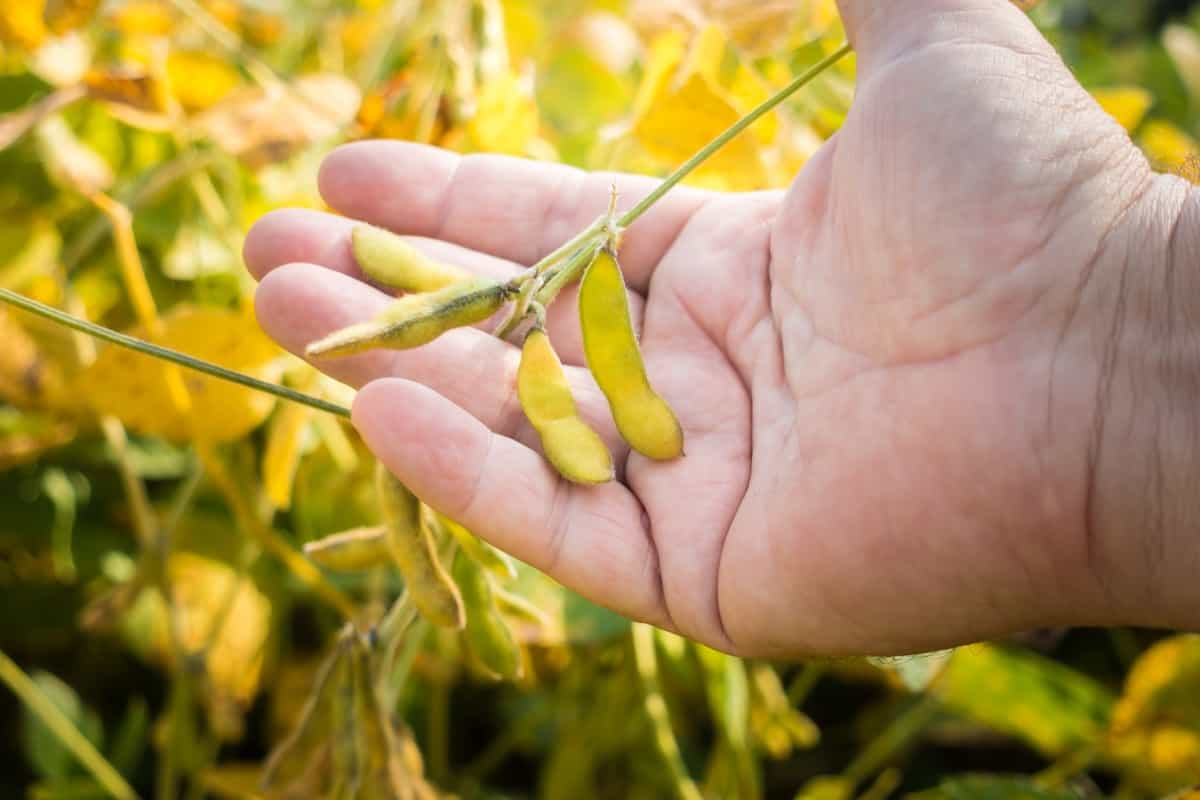Soybean farming is an essential aspect of agriculture in the United States, with Illinois being the leading state in soybean production. Soybeans are versatile crops with numerous applications, ranging from human consumption to animal feed and biofuel production. Here we learn how to start soybean farming in Illinois, covering ideal growing conditions, soil requirements, yield, and profit-maximizing.

How to Start Soybean Farming in Illinois
Understand the Ideal Growing Conditions for Soybeans
Soybeans are warm-season crops that thrive in temperatures ranging from 60°F to 86°F (15°C to 30°C). They require adequate sunlight, with at least 6 to 8 hours of direct sunlight daily. Planting soybeans after the last frost date is recommended since they are frost sensitive. In Illinois, this is usually towards the end of April or the beginning of May.
Choose the Right Soybean Variety
Numerous soybean varieties are available, each with its unique characteristics, such as maturity group, disease resistance, and yield potential. In Illinois, select a soybean variety that is suitable for your specific region and meets your needs. Consult your local agricultural extension office for recommendations on the best varieties for your area.
Soybean Soil Requirements
Soybeans can grow in various soil types but thrive in well-drained, loamy soils with a pH range of 6.0 to 6.8. To optimize development, test soil pH and nutrients. Amend the soil accordingly with lime, sulfur, or organic matter to achieve the desired pH and improve fertility. Proper soil preparation is essential, as it promotes strong root development, improves water infiltration, and reduces soil compaction.
Seed Selection and Treatment
Purchase high-quality, certified soybean seeds from a reputable supplier. Seed quality is crucial for high yield and profitability. Before planting, treat the seeds with a fungicide and insecticide to protect them from soil-borne pathogens and pests during germination and early growth stages. This practice enhances seedling vigor and reduces the risk of seedling diseases and insect damage.
Planting
Soybean planting in Illinois typically begins in late April to early May when soil temperatures reach a consistent 50°F (10°C) or warmer. However, the optimal planting window may vary depending on your specific location and weather conditions. Plant soybeans at a depth of 1 to 1.5 inches (2.5 to 3.8 cm) in rows 15 to 30 inches apart, with a seed spacing of 2 to 3 inches (5 to 7.6 cm) within the row. This will result in a target population of approximately 140,000 plants per acre. Proper planting depth and spacing are crucial for maximizing yield potential.
Fertilization and Nutrient Management
Soybeans require an adequate nutrient supply for optimal growth and yield. The primary nutrients needed by soybeans are nitrogen (N), phosphorus (P), and potassium (K). Nitrogen is often supplied by nitrogen-fixing bacteria in the root nodules of soybean plants. However, additional nitrogen may be necessary if the soil test indicates low nitrogen levels or poor modulation. Typically used as a starter fertilizer at planting or a side-dress application during early vegetative growth stages, phosphorus, and potassium should be applied in accordance with soil test recommendations.
In case you missed it: How to Start Soybean Farming in Iowa: Ultimate Guide for Soil Preparation to Harvest

Weed Management
Effective weed control is crucial for maximizing soybean yield and profitability. Weeds compete with soybean plants for nutrients, water, and sunlight, reducing yield potential. Utilize a combination of cultural, mechanical, and chemical control methods to manage weeds. Start with a clean seedbed using tillage or a non-selective herbicide before planting. Employ crop rotation and cover crops to suppress weed growth and disrupt weed life cycles.
Use pre-emergence herbicides to control weeds before soybean emergence and post-emergence herbicides to control emerged weeds during the growing season. Always follow label instructions when applying herbicides and ensure proper application timing, rates, and adjuvants to maximize weed control efficacy and minimize the risk of crop injury. Remember that managing herbicide-resistant weeds requires an integrated approach, including multiple modes of action and non-chemical control methods.
Pest and Disease Management
Various pests and diseases can affect soybeans, which may reduce yield and profitability. Insects like soybean aphids, bean leaf beetles, and Japanese beetles can cause significant damage to soybean plants. Monitor fields regularly for signs of pest infestation and use integrated pest management (IPM) strategies, such as biological control, cultural practices, and chemical control, to manage insect populations.
Diseases like sudden death syndrome (SDS), soybean cyst nematode (SCN), and white mold can also affect soybean yield. Choose resistant varieties, employ crop rotation, and maintain a balanced fertility program to minimize disease pressure. Fungicides may be necessary to control certain foliar diseases, but always follow label instructions and apply at the appropriate growth stage for maximum efficacy.
Irrigation and Water Management
Soybeans require adequate moisture throughout the growing season, with the most critical period being during flowering and pod development. In Illinois, rainfall is often sufficient to meet soybean water requirements. However, supplemental irrigation may be necessary during drought or in areas with low rainfall. Monitor soil moisture levels and irrigate as needed to prevent water stress, which can significantly reduce yield potential.
Harvesting
Soybeans are typically ready for harvest when the moisture content reaches around 13% to 15%. In Illinois, this usually occurs from late September to early October. Harvesting at the proper moisture content is crucial to maintain seed quality and minimize harvest losses. Use a combine harvester with a soybean header to harvest the crop efficiently. Adjust combine settings to minimize seed damage and harvest losses.
Storage and Marketing
Proper storage of soybeans is essential to maintain quality and ensure maximum profit. Store soybeans in clean, dry, and well-ventilated storage facilities, with moisture content not exceeding 13%. Regularly monitor stored soybeans for signs of spoilage or insect infestation and take appropriate action to preserve quality. Market your soybeans through channels, such as local grain elevators, processors, or directly to end-users. Stay informed about market trends and pricing to maximize your profit potential.
In case you missed it: How to Start Soybean Farming in the USA: Production Guide for Beginners

Conclusion
Soybean farming in Illinois can be a profitable agricultural venture when following best management practices. Understanding the ideal growing conditions, selecting suitable varieties, managing soil fertility, and employing effective weed, pest, and disease control strategies are all crucial components of a successful soybean production system. By following the step-by-step production guide outlined in this article, you can maximize your soybean yield and profit in Illinois.
- Feed Your Flock for Less: Top 10 Tips to Save on Chicken Feed
- Ultimate Guide to Ossabaw Island Hog: Breeding, Raising, Diet, and Care
- Hatching Answers: The Top 10 Reasons Your Chickens Aren’t Laying Eggs
- Eggs and Economics: Breaking Down the Cost of Raising Backyard Chickens
- Defend Your Greens: Proven Methods to Keep Iguanas Out of Your Garden
- Ultimate Guide to Cinnamon Queen Chicken: A Comprehensive Guide for Beginners
- Ultimate Guide to California Tan Chicken: Breeding, Raising, Diet, Egg-Production and Care
- Ultimate Guide to Marsh Daisy Chicken: Breeding, Raising, Diet, and Care
- 10 Types of Chicken Farming Businesses You Can Start for Profits